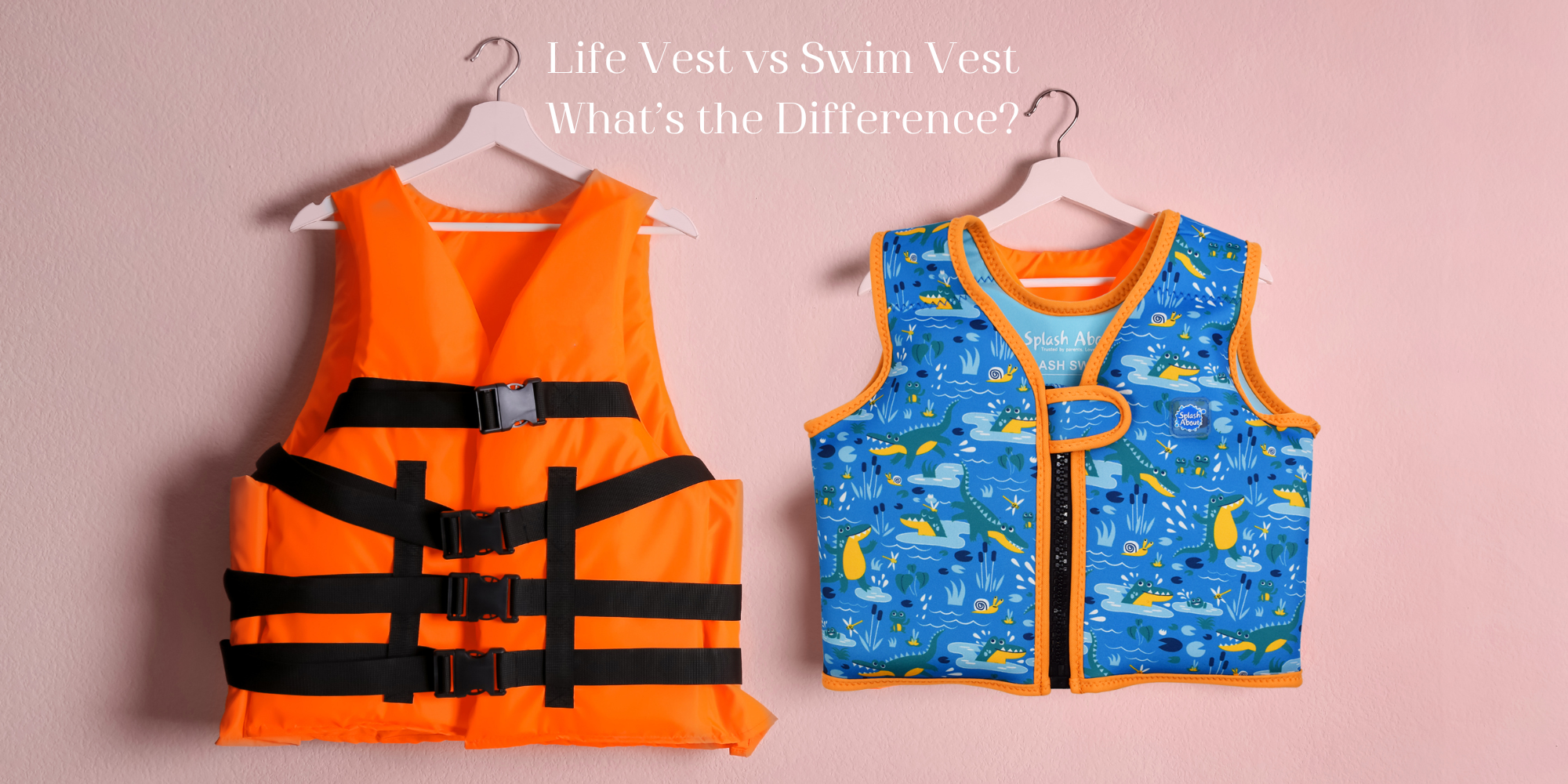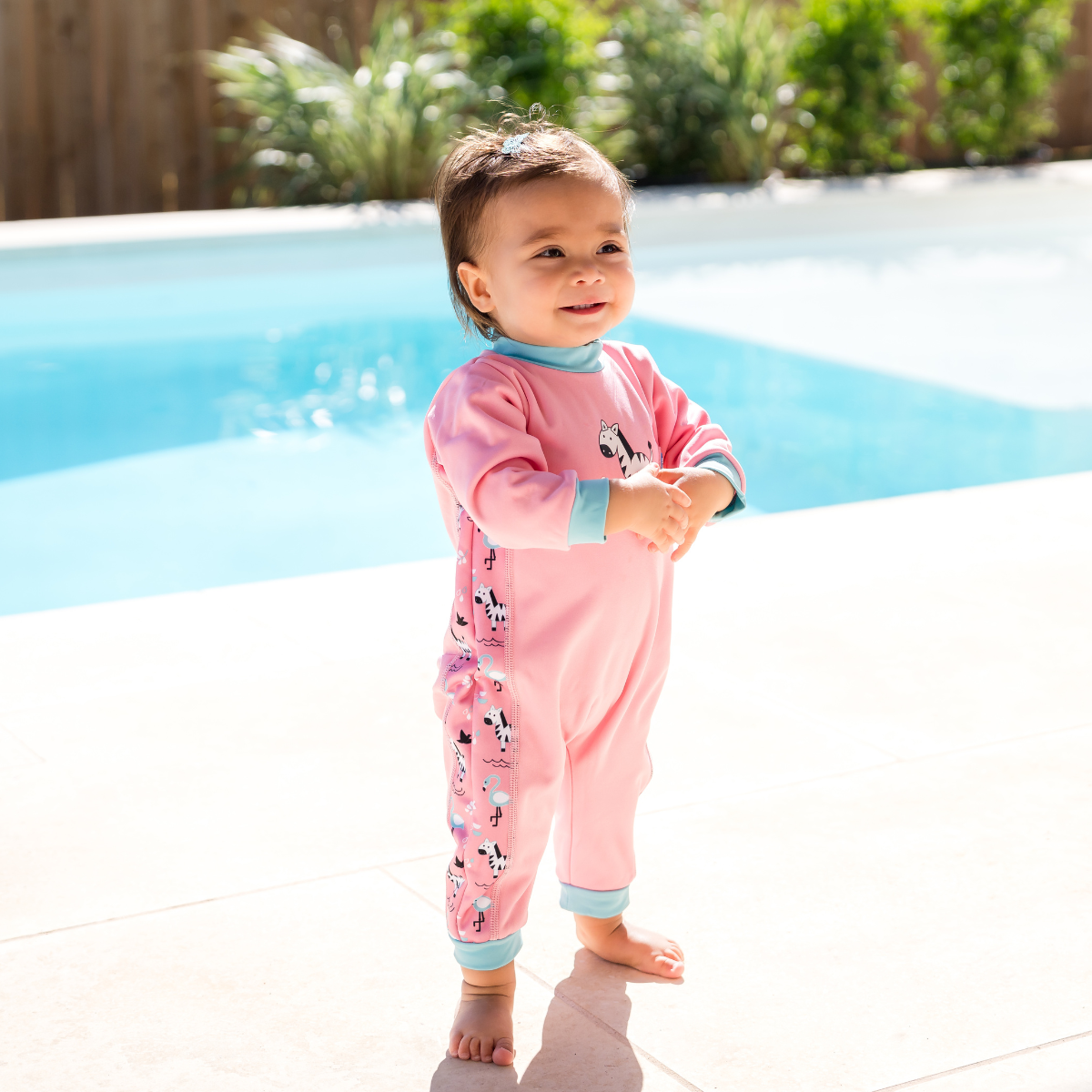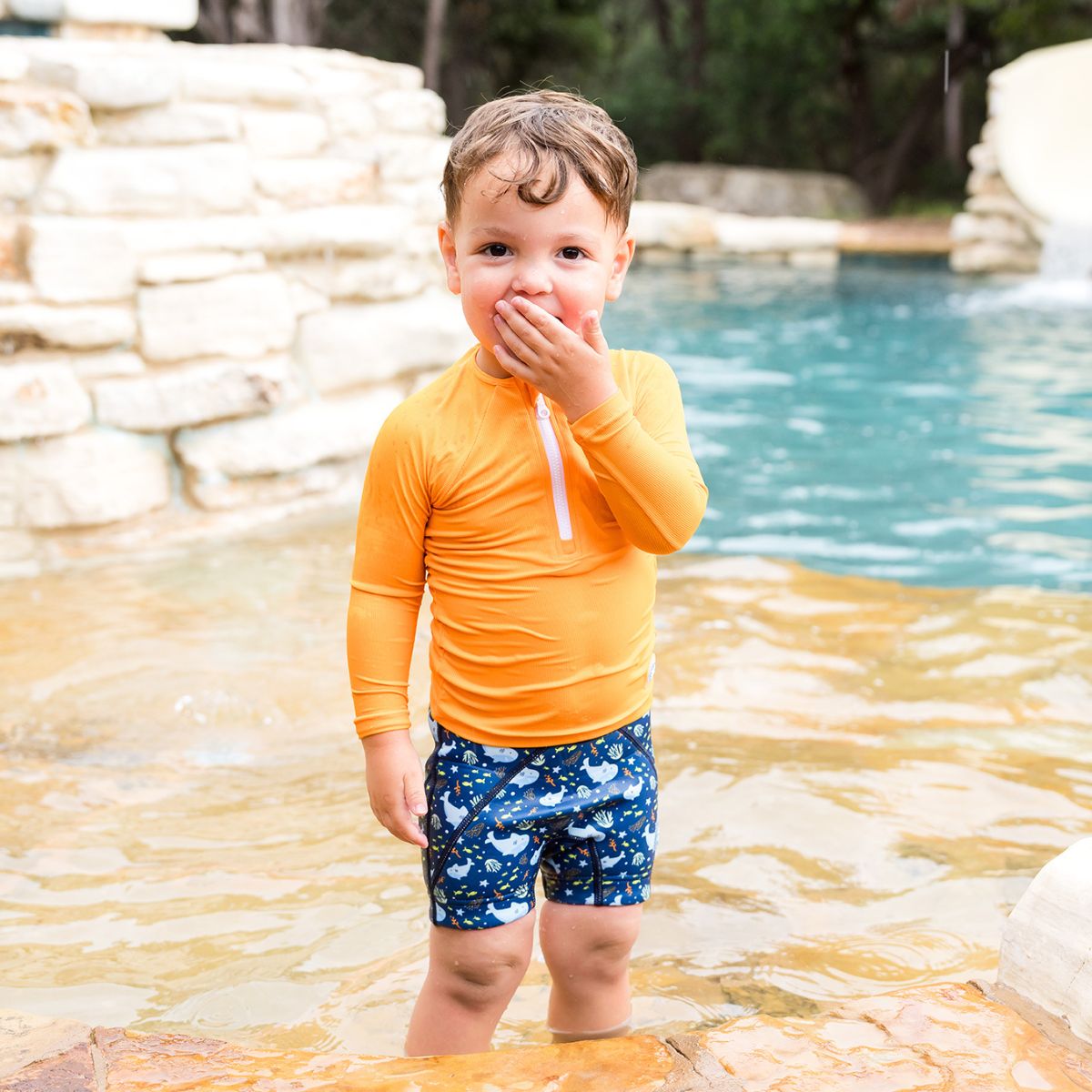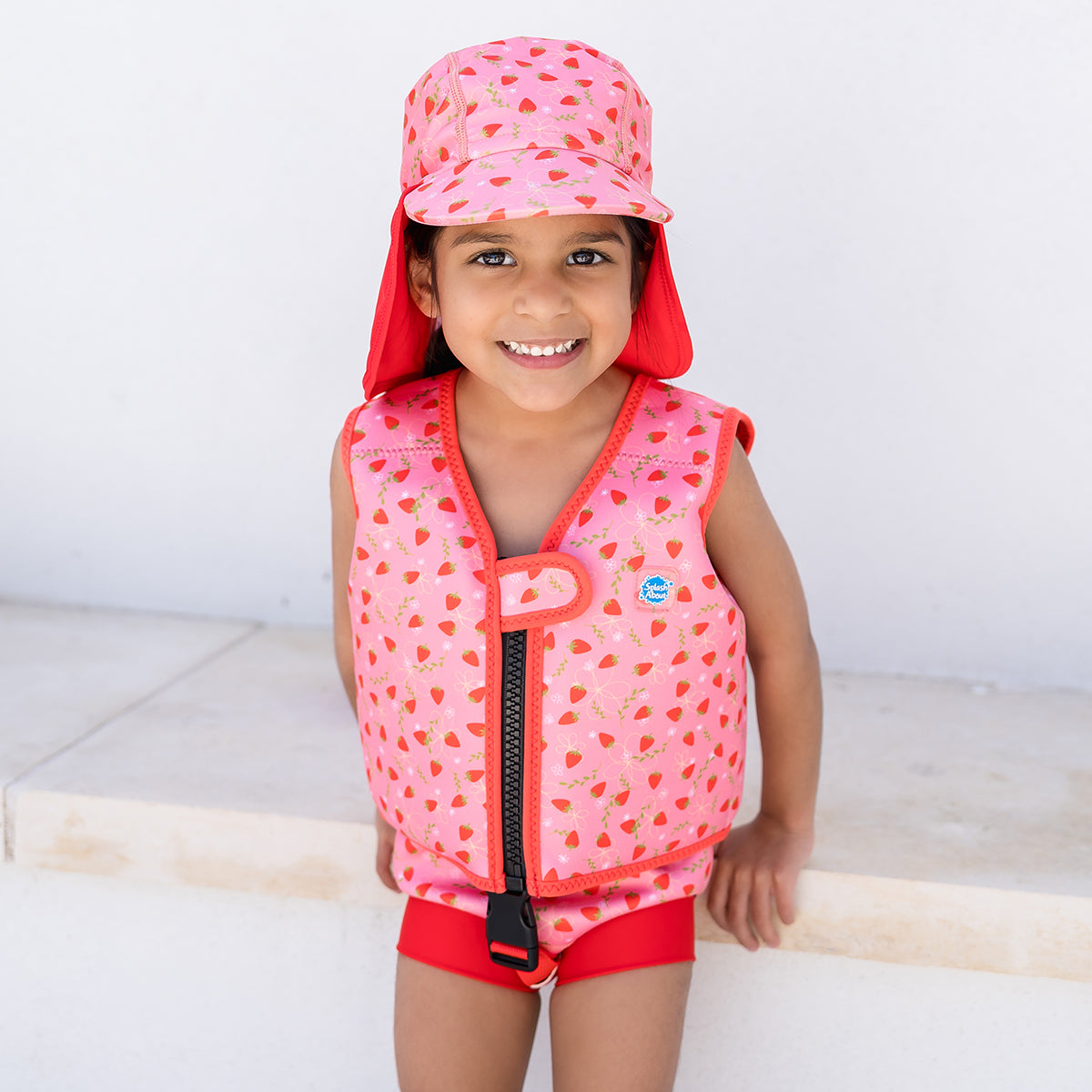What is the difference between a Life Jacket and a Swim Vest?

When you start looking into swimming aids for your child, you’ll come across many different terms: life jacket, life vest, swim vest, float vest, float jacket… it can be confusing to know which one to choose.
To keep things simple, we’ll use two terms, Life Jackets and Swim Vests, as they serve very different purposes.
What Is a Life Jacket?
A Life Jacket is designed to keep the wearer safe if they fall into water. It turns them face up and keeps the head above the surface, even if they are unable to swim or become unconscious.
If you are going on a boat, near deep water or the sea, you should always choose a Life Jacket. It provides complete flotation support and helps keep airways clear of water. Life Jackets are made to international safety standards such as EN ISO 12402 and should always be used according to the manufacturer’s instructions.
What Is a Swim Vest?
A Swim Vest (or float jacket) helps children gain confidence and learn to swim while staying supported in the water. It relies on the wearer being conscious and active, kicking or paddling to maintain position.
Splash About Swim Vests and Float Jackets are CE-tested and designed to help children find a natural swimming position. They’re lightweight, comfortable and made from soft neoprene for extended wear. Swim Vests are for use in controlled environments such as swimming pools, always under adult supervision.
Life Jackets vs Swim Vests: Key Differences
|
When to Use Each Type
-
-
-
Choose a Life Jacket when:
-
Boating, sailing or near deep, open water
-
You need full protection in unpredictable conditions
-
Rescue might not be immediate
-
-
Choose a Swim Vest when:
-
Teaching a child to swim in a supervised pool
-
Playing or practising in calm, shallow water
-
Encouraging natural movement and water confidence
-
-
-
Explore Splash About Swim Vests and Float Jackets
At Splash About, we design products that help children build confidence and independence in the water. Our Swim Vests and Float Jackets are trusted by parents and swim schools worldwide.
-
-
-
Shop Swim Vests - Lightweight, easy to wear and ideal for teaching children to swim in the pool.
-
Shop Float Jackets - Adjustable float systems that grow with your child as they gain confidence and skill.
-
-
Both styles are CE-tested, comfortable for long wear and designed to hold children in the correct swimming position.
![]()
Safety and Standards
All Splash About Swim Vests and Float Jackets are CE-tested to meet European safety standards for swimming aids.
Life Jackets must meet higher international safety requirements, such as EN ISO 12402, for use as personal safety equipment.
Remember, a Swim Vest supports learning and confidence, while a Life Jacket provides safety in emergencies. Neither replaces active adult supervision.
FAQ Block
Q: Can I use a Swim Vest instead of a Life Jacket on a boat?
A: No. Swim Vests are designed for supervised swimming and not for open water or boating. Always use a certified Life Jacket for those situations.
Q: Will a Swim Vest stop my child from going under the water?
A: No. It helps support children while swimming but allows movement below the surface.
Q: Are Splash About Swim Vests suitable for toddlers?
A: Yes. Splash About Swim Vests and Float Jackets are CE-tested and created for safe use in supervised swimming sessions.
Q: What’s the main difference between a Life Jacket and a Swim Vest?
A: A Life Jacket keeps the wearer safe and face-up in the water, while a Swim Vest helps children learn to swim in a comfortable and supported way.




